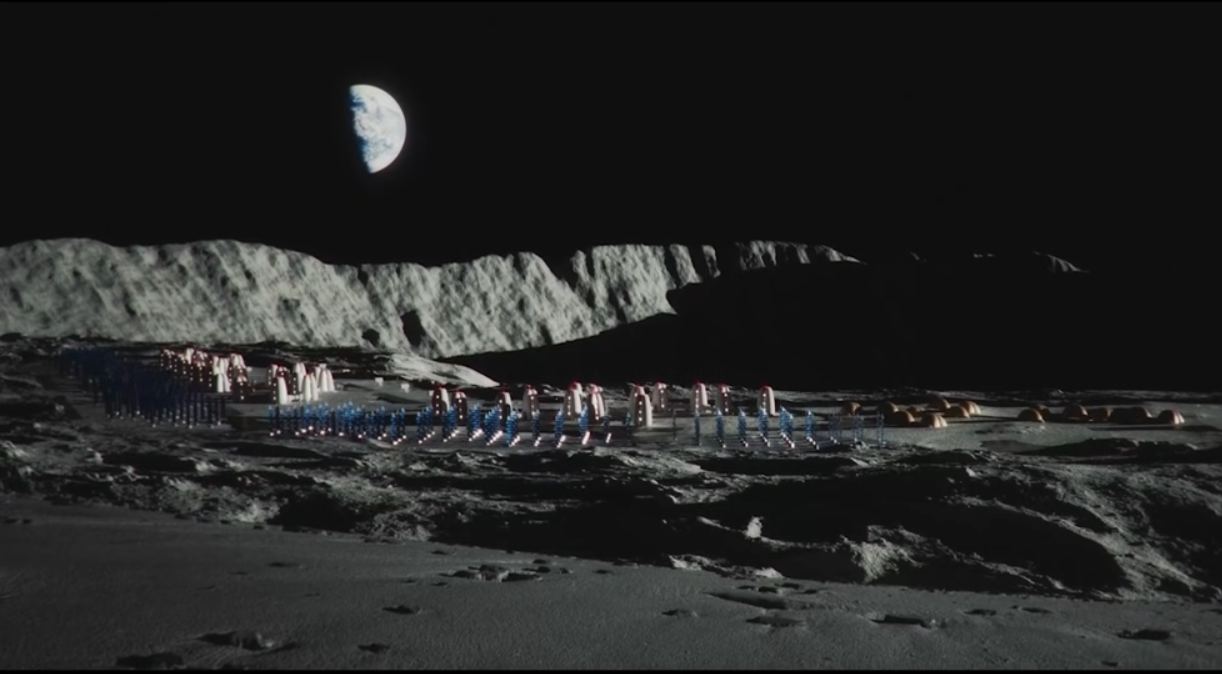
October 19, 2024 by Matt Williams
Collected at: https://www.universetoday.com/168915/new-simulation-will-help-future-missions-collect-moon-dust/
In this decade and the next, multiple space agencies will send crewed missions to the Moon for the first time since the Apollo Era. These missions will culminate in the creation of permanent lunar infrastructure, including habitats, using local resources – aka. In-situ resource utilization (ISRU). This will include lunar regolith, which robots equipped with additive manufacturing (3D printing) will use to fashion building materials. These operations will leverage advances in teleoperation, where controllers on Earth will remotely operate robots on the lunar surface.
According to new research by scientists at the University of Bristol, the technology is one step closer to realization. Through a virtual simulation, the team completed a sample collection task and sent commands to a robot that mimicked the simulation’s actions in real life. Meanwhile, the team monitored the simulation without requiring live camera streams, which are subject to a communications lag on the Moon. This project effectively demonstrates that the team’s method is well-suited for teleoperations on the lunar surface.
As part of NASA’s Artemis Program, the ESA’s Moon Village, and the Chinese Lunar Exploration Program (Chang’e), space agencies, research institutes, and commercial space companies are researching how to extract valuable resources from lunar regolith (aka. moon dust). These include water and oxygen, which can be used to provide for astronauts’ basic needs and create liquid hydrogen and oxygen propellant. Remote handling of regolith will be essential to these activities since moon dust is abrasive, electrostatically charged, and difficult to handle.

The team was comprised of researchers from the University of Bristol’s School of Engineering Mathematics and Technology, who carried out the experiment at the European Space Agency’s European Centre for Space Applications and Telecommunications (ESA-ESCAT) in Harwell, UK. The study that describes their experiment was presented at the 2024 International Conference on Intelligent Robots and Systems (IROS 2024) in Dubai and was published in the research journal run by the Institute of Electrical and Electronics Engineers (IEEE).
As lead author Joe Louca, a Doctor of Philosophy at Bristol’s School of Engineering Mathematics and Technology, explained:
“One option could be to have astronauts use this simulation to prepare for upcoming lunar exploration missions. We can adjust how strong gravity is in this model, and provide haptic feedback, so we could give astronauts a sense of how Moon dust would feel and behave in lunar conditions – which has a sixth of the gravitational pull of the Earth’s. This simulation could also help us to operate lunar robots remotely from Earth, avoiding the problem of signal delays.”
The virtual model the team created could also reduce the costs associated with the development of lunar robots for institutes and companies researching the technology. Traditionally, experiments involving lunar construction have required the creation of simulants with the same properties as regolith and access to advanced facilities. Instead, developers can use this simulation to conduct initial tests on their systems without incurring these expensive costs.

Looking ahead, the team plans to investigate the potential non-technical barriers of this technology. This will include how people interact with this system, where communications suffer a roundtrip delay of 5 to 14 seconds. This is expected for the Artemis missions, as opposed to the 3-second delay experienced by the Apollo missions due to increased delays in the Deep Space Network (DSN). Said Louca:
“The model predicted the outcome of a regolith simulant scooping task with sufficient accuracy to be considered effective and trustworthy 100% and 92.5% of the time. In the next decade, we’re going to see several crewed and uncrewed missions to the Moon, such as NASA’s Artemis program and China’s Chang’e program. This simulation could be a valuable tool to support preparation or operation for these missions.”
Further Reading: University of Bristol

Leave a Reply